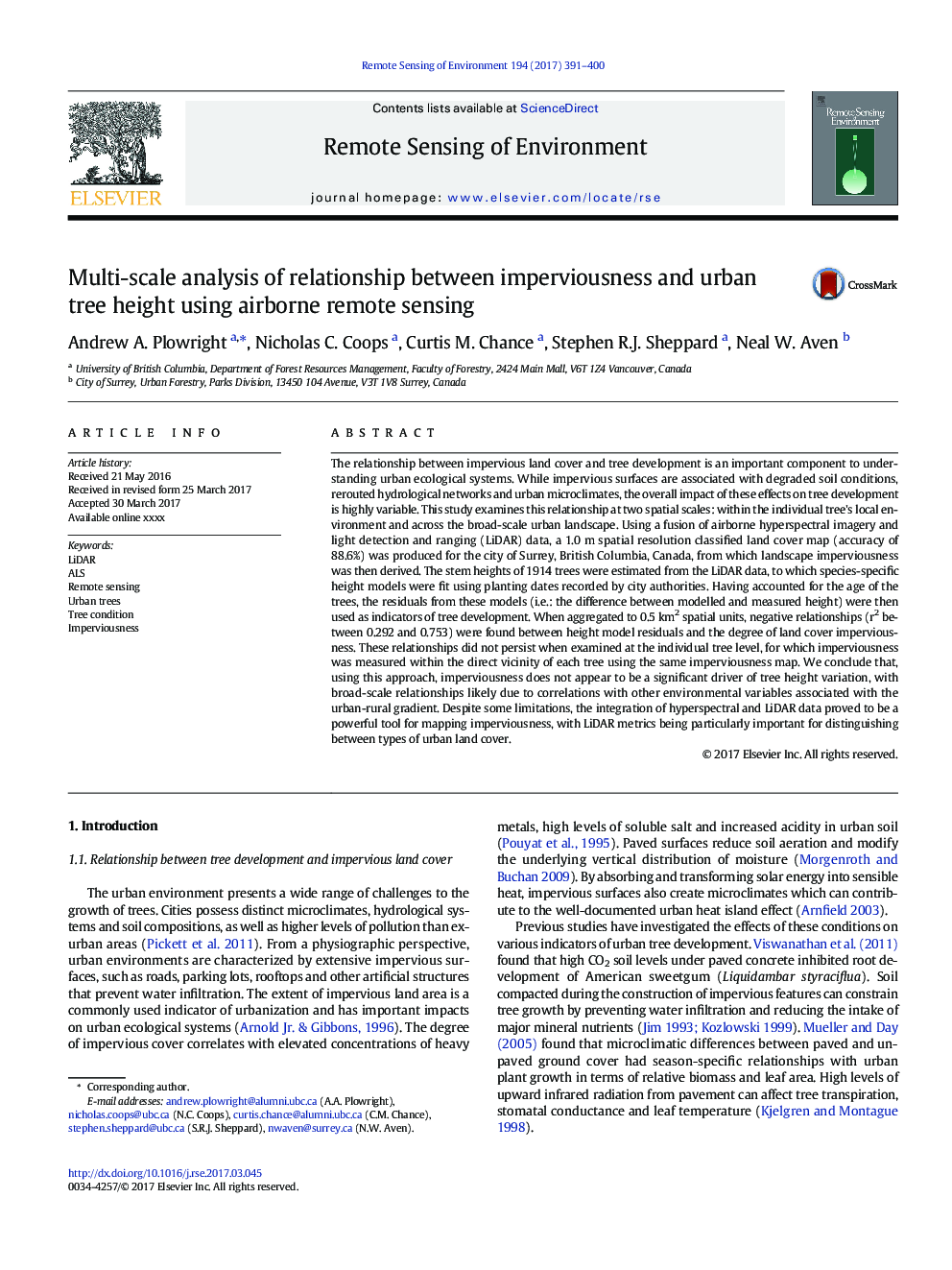| کد مقاله | کد نشریه | سال انتشار | مقاله انگلیسی | نسخه تمام متن |
|---|---|---|---|---|
| 5755015 | 1621206 | 2017 | 10 صفحه PDF | دانلود رایگان |
عنوان انگلیسی مقاله ISI
Multi-scale analysis of relationship between imperviousness and urban tree height using airborne remote sensing
ترجمه فارسی عنوان
تجزیه و تحلیل چندگانه ارتباط بین عدم نفوذ و ارتفاع درخت درختان با استفاده از سنجش از راه دور هوا
دانلود مقاله + سفارش ترجمه
دانلود مقاله ISI انگلیسی
رایگان برای ایرانیان
کلمات کلیدی
موضوعات مرتبط
مهندسی و علوم پایه
علوم زمین و سیارات
کامپیوتر در علوم زمین
چکیده انگلیسی
The relationship between impervious land cover and tree development is an important component to understanding urban ecological systems. While impervious surfaces are associated with degraded soil conditions, rerouted hydrological networks and urban microclimates, the overall impact of these effects on tree development is highly variable. This study examines this relationship at two spatial scales: within the individual tree's local environment and across the broad-scale urban landscape. Using a fusion of airborne hyperspectral imagery and light detection and ranging (LiDAR) data, a 1.0Â m spatial resolution classified land cover map (accuracy of 88.6%) was produced for the city of Surrey, British Columbia, Canada, from which landscape imperviousness was then derived. The stem heights of 1914 trees were estimated from the LiDAR data, to which species-specific height models were fit using planting dates recorded by city authorities. Having accounted for the age of the trees, the residuals from these models (i.e.: the difference between modelled and measured height) were then used as indicators of tree development. When aggregated to 0.5Â km2 spatial units, negative relationships (r2 between 0.292 and 0.753) were found between height model residuals and the degree of land cover imperviousness. These relationships did not persist when examined at the individual tree level, for which imperviousness was measured within the direct vicinity of each tree using the same imperviousness map. We conclude that, using this approach, imperviousness does not appear to be a significant driver of tree height variation, with broad-scale relationships likely due to correlations with other environmental variables associated with the urban-rural gradient. Despite some limitations, the integration of hyperspectral and LiDAR data proved to be a powerful tool for mapping imperviousness, with LiDAR metrics being particularly important for distinguishing between types of urban land cover.
ناشر
Database: Elsevier - ScienceDirect (ساینس دایرکت)
Journal: Remote Sensing of Environment - Volume 194, 1 June 2017, Pages 391-400
Journal: Remote Sensing of Environment - Volume 194, 1 June 2017, Pages 391-400
نویسندگان
Andrew A. Plowright, Nicholas C. Coops, Curtis M. Chance, Stephen R.J. Sheppard, Neal W. Aven,
